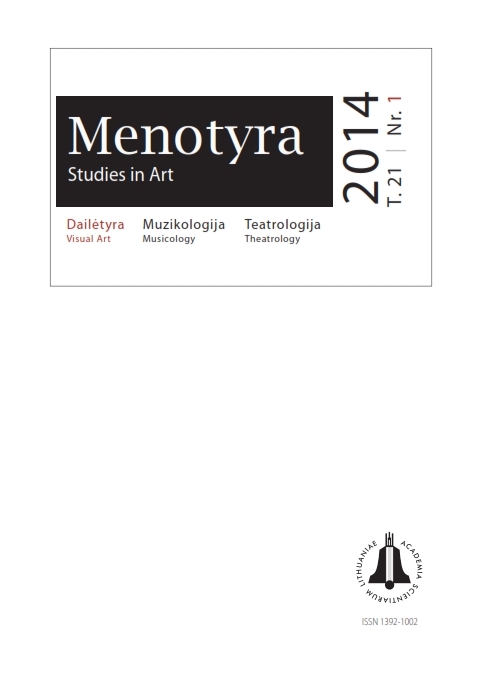Nieznane realizacje gdańskiego rzeźbiarza Wilhelma Richtera w Wielkim Księstwie Litewskim
The unknown works of a Gdansk sculptor Wilhelm Richter in the territory of the Grand Duchy of Lithuania
Author(s): Dorota PiramidowiczSubject(s): Fine Arts / Performing Arts, Architecture, Visual Arts
Published by: Lietuvos mokslų akademijos leidykla
Keywords: Wilhelm Rihter; Abraham van den Blocke; Gdansk sculptor; architecture of the Great Duchy of Lithuania; Bereza chartehouse; Sapieha palace in Vilnius; Georg Schwengel; Kazimierz Leon Sapieha
Summary/Abstract: The article introduces artistic achievements of Wilhelm Richter, a sculptor and constructor from Gdansk of the baroque period. It focuses on his cooperation with Abraham van den Blocke being a head of one of the largest sculptural and architectural workshops in Gdansk and on their joint work. Referring to documents at the British Library the author presents unknown objects sculpted by Richter which were commissioned and financed by Kazimierz Leon Sapieha, with stone door portals for Sapieha palace in Vilnius (finally placed in Bereza charterhouse) among them. The portals could have resembled the ones made by Richter for the cathedral at Gniezno. Other works for Bereza included two decorated cartouches with coats-of-arms of the order and the founder. It is probable that a pair of marble sarcophaguses intended to bury bodies of Sapieha and his wife, Teodora Krystyna neé Tarnowska, derived from the workshop of Richter. Important discovery of documents which described works done by Richter for Kazimierz Leon Sapieha constitutes an irrefutable proof of artistic contacts of this Lithuanian magnate with the circle of sculptors at Gdansk. It is even more important in relation to the architecture of Vilnius or Bereza charterhouse and reconstructed biography of Richter himself. By now unquestionable information covering his activity had ended by the mid-17th century (accounts for decoration of the Gulderstern chapel and epitaph in Gdansk, 1653), while his links with patrons like Sapieha had not been recorded. The presented documents allow to supplement studies on the artist’s ouevre and enrich our knowledge of contacts and trends in activity of the artistic milieu from Gdansk in the territory of the Grand Duchy of Lithuania.
Journal: Menotyra
- Issue Year: 21/2014
- Issue No: 1
- Page Range: 1-12
- Page Count: 13
- Language: Polish

